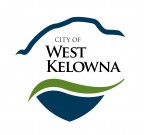Mount Eneas – Brent Road – Evacuation Order downgraded to Alert
News Release No. 11: Central Okanagan, B.C. – Effective immediately, the Evacuation Order in the Brent Road area (Regional District of Central Okanagan) impacted by the Mount Eneas fire has been downgraded to an Evacuation Alert. In addition, the Finlay Creek Cabins have been added to the Evacuation Alert.
Residents of 38 properties displaced by the Evacuation Order can now return to their homes. However, these residents are reminded that they remain on Evacuation Alert and should still be prepared to leave their homes again with little notice.
The following addresses are now on Evacuation Alert:
- 7100 – 7210 Brent Road
- 7212 – 7280 Highway 97 South
- Finlay Creek Cabins
For an interactive map of the affected areas, go to cordemergency.ca/map.
For information on properties on evacuation order and alert within the boundaries of the Regional District of Okanagan Similkameen, visit rdos.bc.ca. This includes Okanagan Lake Provincial Park and the Greata Ranch area.
Emergency Support Services (ESS) Update
The Central Okanagan Emergency Support Services (ESS) Reception Centre located at the Lakeview Heights Baptist Church at 2630 Alhambra Drive in West Kelowna is now closed. The Centre would be re-opened on an as needed basis.
Emergency Updates
For more information about current wildfires in the Central Okanagan, visit cordemergency.ca, sign up for e-updates or call the information line at 250-469-8490.
You can also monitor the Central Okanagan Emergency social media channels for official situation updates and preparedness information on facebook.com/cordemergency and on twitter.com/CO_emerg.
Additional information for residents returning home
Hazardous conditions may still exist on private properties. The public is requested to stay out of fire-affected areas for their own safety.
The Emergency Management BC’s website provides important information for those returning to their homes after an evacuation: http://www.embc.gov.bc.ca/em/index.html.
Interior Health also provides some useful information for residents returning to their homes. It deals with exposure to smoke from forest fires, food safety, water quality and septic tanks and disposal fields and can be found on its website Emergency Preparedness page at www.interiorhealth.ca/YourEnvironment/EmergencyPreparedness.
Food safety
If the power has been out in your home the food in your fridge or freezer may no longer be safe to eat. The following tips will help you determine if food has been affected. Ideally fridge temperatures should remain at 4 degrees Celsius or colder and foods in the freezer should remain frozen solid.
In a power outage a refrigerator can usually keep food cool for up to four hours and a freezer can usually keep food safe for a few days - if it is kept closed.
If you don’t have a thermometer or if you don’t know how long your fridge or freezer was without power:
- Check the products in the fridge for spoilage and souring.
- Milk and other dairy products that have spoiled/become sour are good indicators that the fridge has been off and all food should be discarded.
- Ice cream that has thawed and refrozen is a good indicator that the freezer has been off.
- Fish product that smells bad upon thawing is also a sign that food in your freezer has thawed and refrozen.
Frozen foods that have thawed must be discarded as they may no longer be safe to eat. Food in the freezer that has (or may have) reached 4 degrees Celsius or warmer should be discarded and must not be refrozen. If in doubt - throw it out. Do not take any chances with the safety of your food.
If there has been an extended power outage, it may be necessary to contact your insurance provider. Make a list of items discarded and photograph those items (if possible) for insurance purposes.
Hazards
Although the fire affected area may appear safe, serious hazards still remain. The hazards listed below may not represent all the hazards you may come across. Please be cautious!
- Widow Makers are burnt trees with little or no limbs that have limited structural support and may fall silently at any time.
- Easy Bake Ovens are burning root structures that leave the surrounding ground unstable and extremely hot. The roots can burn for days and are extremely dangerous. These areas may appear as “dinosaur footprints” and must be avoided at all times.
- Falling Limbs may occur in any area where trees have been exposed to the fire.
- Electrical Hazards, such as fallen power lines (and other utility lines) and power poles affected by the fire. Some poles may be unstable. Treat all fallen lines with extreme caution. If you come across a utility line that may be activated, contact the appropriate utility company.
- Structural Hazards, fall hazards, and potentially dangerous gas pockets may exist in some of the homes affected by the fire. Avoid private properties at all times. Standing chimneys and walls may appear to be sound. Be aware the concrete in these structures may be fragile due to excessive heat and may collapse at any time.
- General Site Safety as emergency response personnel may be active in many of the areas you are working. Please do not block access to streets.
- Wild Animals may have been affected by the fire. If you spot a bear, cougar, or other animal in distress, please keep your distance and contact the conservation officer service.







